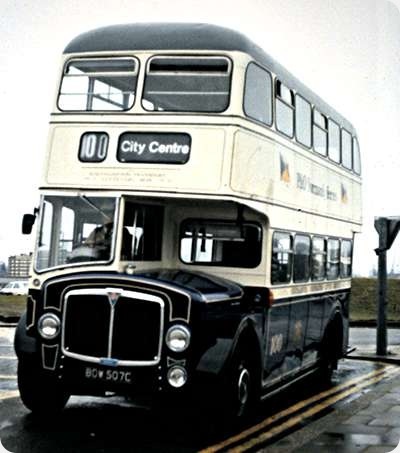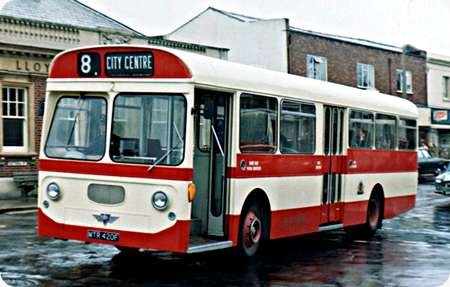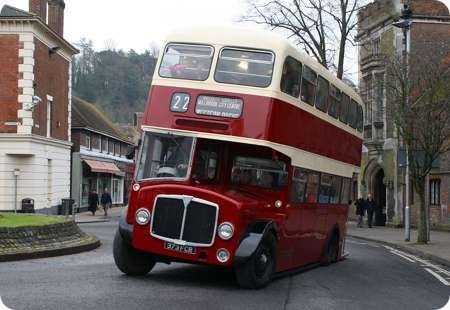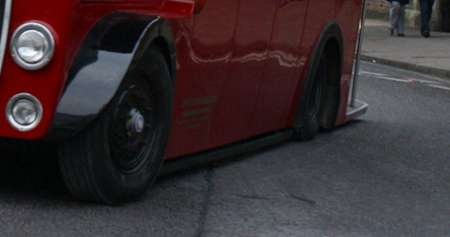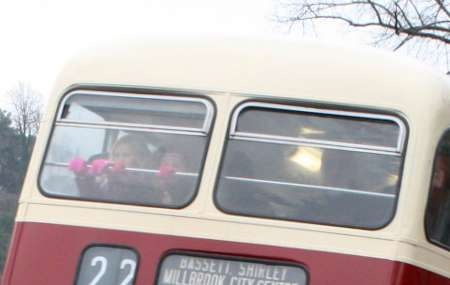Southampton Corporation – AEC Regent V – BOW 507C – 371
Southampton Corporation
1965
AEC Regent V 2D3RA
Neepsend H37/29R
This AEC Regent V with East Lancs (Neepsend) H66R bodywork was new in 1965 to Southampton City Transport with fleet number 371. Some of this delivery (358 to 370) were to have been 358 HCR to 370 HCR, but were caught in the change to year suffix numbers. Indeed, some of them even failed to have their booked BTR …B marks, and gained BOW …C plates instead. BOW 507C isn’t one of those so marked in the fleet history by A K MacFarlane-Watt. In this view, on the soggy afternoon of 1st February, 1979, she has been repainted in the 1930’s livery and renumbered 100 for the operator’s Centenary, and is being positioned outside Civic Centre for the Committee inspection. My then boss, the City Architect, said he had commented to the Transport Manager that it looked very nice, but asked "Why the P&O advert?". He said that Bill Lewis replied, "They paid for the repaint."
Photograph and Copy contributed by Pete Davies
13/10/15 – 06:43
At the end of the day, it all comes down to personal preference. I’m not a lover of tin fronts, most tend to look a bit harsh, and some are positively brutal in appearance, but the AEC seems to buck that trend. A few round edges and a bit of bright trim makes all the difference. Mind you, when a bit of neglect sets in where badges go astray, or trim is painted over, or bits are removed and not replaced, well that’s another matter entirely.
Ronnie Hoye
13/10/15 – 08:58
Thank you, Ronnie. I suppose that – having grown up with the Regents of Morecambe & Heysham corporation – the arrival of the Regent V was something of a shock. I wonder if this is why some places didn’t go for this ‘new look’ and stayed with the exposed radiator on their Regent V fleets.
Pete Davies
14/10/15 – 16:10
I always think that there was something Macho about the preference for exposed radiators- a touch Mack or Peterbilt, or deferring to the traditional Atkinson. Doncaster only ever had fibre-front CVG’s- Leyland and AEC deckers were exposed radiator until the half cab was bustled away.
Joe
15/10/15 – 07:21
Thanks, Joe. A "real" Scammell, perhaps, or the Thornycroft Mighty Antar, with the snout, rather than those designer products from their latter years . . .
Pete Davies
Quick links to the - Comments Page - Contact Page - Home Page
